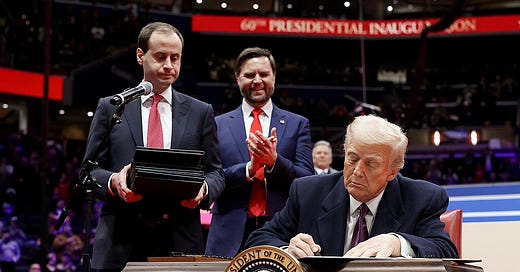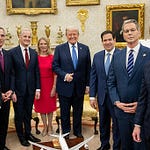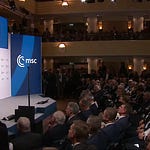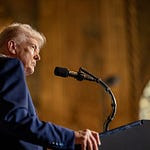Today’s show is a rebroadcast of Episode 34 where I discussed the nature and limitations of executive orders. Both the Biden and Trump administrations spent their first days in office signing executive orders almost as fast as staffers could get them across their desks. And while those executive orders demonstrate the “energy” Publius sought to imbue the executive branch with, they also come with some real limitations.
In today’s show, I’m going to provide you with a brief overview of executive orders, their purposes, how they fit in our Constitution system, and why they so often become a lightning rod for partisan controversy.
Main topic: Executive Orders
What’s the difference between an executive order, a presidential proclamation, and a presidential memorandum?
Presidential Proclamation
“A presidential proclamation is an instrument that:
states a condition,
declares a law and requires obedience,
recognizes an event, or
triggers the implementation of a law, by recognizing that the circumstances described in the law have been realized.
Proclamations issued by the US president fall into two broad categories:
"ceremonial" proclamations, that designate special observances or celebrate national holidays, and
"substantive" proclamations, that usually relates to the conduct of foreign affairs and other sworn executive duties. These may be, but are not limited to, matters of international trade, the execution of set export controls, the establishment of tariffs, or the reservation of federal lands for the benefit of the public in some manner.[2]
Unless authorized by the US Congress, a presidential proclamation does not have the force of law.” Source: Wikipedia
Presidential Memorandum
“A presidential memorandum is a type of directive issued by the president of the United States to manage and govern the actions, practices, and policies of the various departments and agencies found under the executive branch of the United States government. It has the force of law and is usually used to delegate tasks, direct specific government agencies to do something, or to start a regulatory process. There are three types of presidential memoranda: presidential determination or presidential finding, memorandum of disapproval, and hortatory memorandum.” Source: Wikipedia
Executive Order
“An executive order is a means of issuing federal directives in the United States, used by the President of the United States, that manages operations of the federal government. The legal or constitutional basis for executive orders has multiple sources. Article Two of the United States Constitution gives the president broad executive and enforcement authority to use his or her discretion to determine how to enforce the law or to otherwise manage the resources and staff of the executive branch. The ability to make such orders is also based on expressed or implied Acts of Congress that delegate to the president some degree of discretionary power (delegated legislation).” Source: Wikipedia
Key Points about XOs
Govern the management and operations of the executive branch
Have the force of law
Subject to judicial review
In force until canceled, revoked, determined to be unlawful, and/or sunsetted
Popular Myths
The “King” Myth: Rule by decree. No, but good rhetoric
The “Omnipotence” Myth: Can be on anything. No, must be constitutionally grounded
The “Constancy” Myth: No, these aren’t permanent, in fact they’re the least permanent elements of a President’s legacy (they can change even under the same President)
Limits of XOs
Only affect the federal government
Subject to Congressional and Judicial checks
Impacts on US Foreign Policy in the Middle East
Presidential Proclamation NOT an Executive Order
EO cut offensive military aid to Saudi Arabia for use in Yemen and reverse designation of Houthis as terrorist group
The spoken and written word (podcasts and reading)
Websites
Podcasts
The last word
“Energy in the Executive is a leading character in the definition of good government. It is essential to the protection of the community against foreign attacks; it is not less essential to the steady administration of the laws; to the protection of property against those irregular and high-handed combinations which sometimes interrupt the ordinary course of justice; to the security of liberty against the enterprises and assaults of ambition, of faction, and of anarchy. “ - Alexander Hamilton, Federalist 70














Share this post